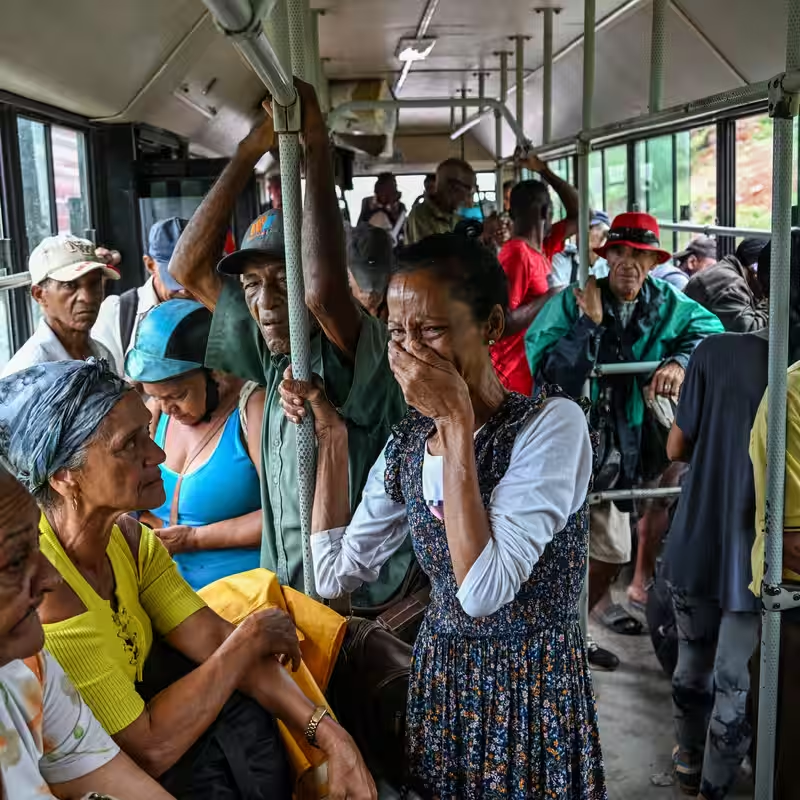Hurricane Melissa: 500K Cubans Evacuated as Storm Nears
Hurricane Melissa, now a Category 3 storm after devastating Jamaica, is barreling toward eastern Cuba—prompting one of the island’s largest evacuations in recent memory. As of Tuesday evening, nearly 500,000 Cubans have been moved from high-risk zones, according to Cuban state media.
Hurricane Melissa’s Path of Destruction
After making landfall in Jamaica as a catastrophic Category 5 hurricane with 185 mph winds, Hurricane Melissa has weakened slightly but remains extremely dangerous. The storm is expected to strike southeastern Cuba—particularly the provinces of Santiago de Cuba and Guantánamo—late Tuesday or early Wednesday.
Forecasters warn of:
- Life-threatening storm surge of 8–12 feet
- Rainfall totals of 10–25 inches
- Flash flooding and landslides in mountainous regions
Mass Evacuation Under Duress
Despite Cuba’s deepening economic crisis—marked by chronic power outages, fuel shortages, and food scarcity—the government has mobilized an impressive civil defense response. By Tuesday morning, 424,669 people had already been evacuated, with numbers climbing rapidly.
In Guantánamo Province, entire rural towns like San Antonio del Sur were “totally depopulated,” according to local residents. Evacuees were bused to universities and schools turned into emergency shelters, many equipped with on-site medical staff.
“If they are in a high-risk place, they have to be evacuated whether they want to or not,” said Iliana Mendez, a civil defense coordinator in Bayamo.
Hurricane Melissa vs. Cuba’s Fragile Infrastructure
Cuba’s vulnerability is amplified by years of economic strain. With frequent blackouts and limited fuel, many citizens couldn’t stockpile essentials despite official warnings. Social media posts reflected frustration: “There’s hardly any food or fuel to hoard,” one user wrote.
Still, President Miguel Díaz-Canel insisted the nation was prepared. “We know this cyclone will cause a great deal of damage,” he said in a televised address. “But we will have every ability to recover.”
Contrast With Jamaica’s Response
While Cuba moved nearly half a million people to safety, Jamaica saw only about 15,000 in government shelters—despite Hurricane Melissa’s historic landfall there. Experts attribute the difference to Cuba’s highly centralized disaster response system, honed over decades of hurricane experience.
Infographic: Hurricane Melissa – Cuba Evacuation Snapshot
| Metric | Figure |
|---|---|
| People Evacuated (Cuba) | ~500,000 |
| Evacuation Zones | Santiago de Cuba, Guantánamo, Granma |
| Expected Rainfall | 10–25 inches |
| Storm Surge | 8–12 feet |
| Hurricane Category at Landfall (Cuba) | Category 3–4 |
| Shelters Activated | Schools, universities, community centers |
Aid and International Response
The United Nations has pre-positioned emergency supplies in Panama and Barbados. Three health kits—each designed to support 10,000 people for three months—have already been sent to Cuba. Additional teams are on standby to deploy once the storm passes.
Meanwhile, the U.S. Navy evacuated personnel from its base at Guantánamo Bay, underscoring the storm’s severity even for hardened facilities.
Climate Change and Caribbean Vulnerability
Hurricane Melissa’s intensity—fueled by record-warm Caribbean waters—highlights the growing threat of climate change to island nations. Scientists note that while attribution studies are pending, warmer oceans are making storms wetter and more powerful.
Caribbean leaders, including Barbados Prime Minister Mia Mottley, have long urged wealthy nations to fulfill climate finance pledges. So far, promises of $100 billion annually for resilience remain largely unmet.
What’s Next?
After Cuba, Hurricane Melissa is forecast to move toward the Bahamas by Wednesday, though major tourist hubs like Nassau may avoid a direct hit. Still, outer bands could bring dangerous rain and wind to the region.




